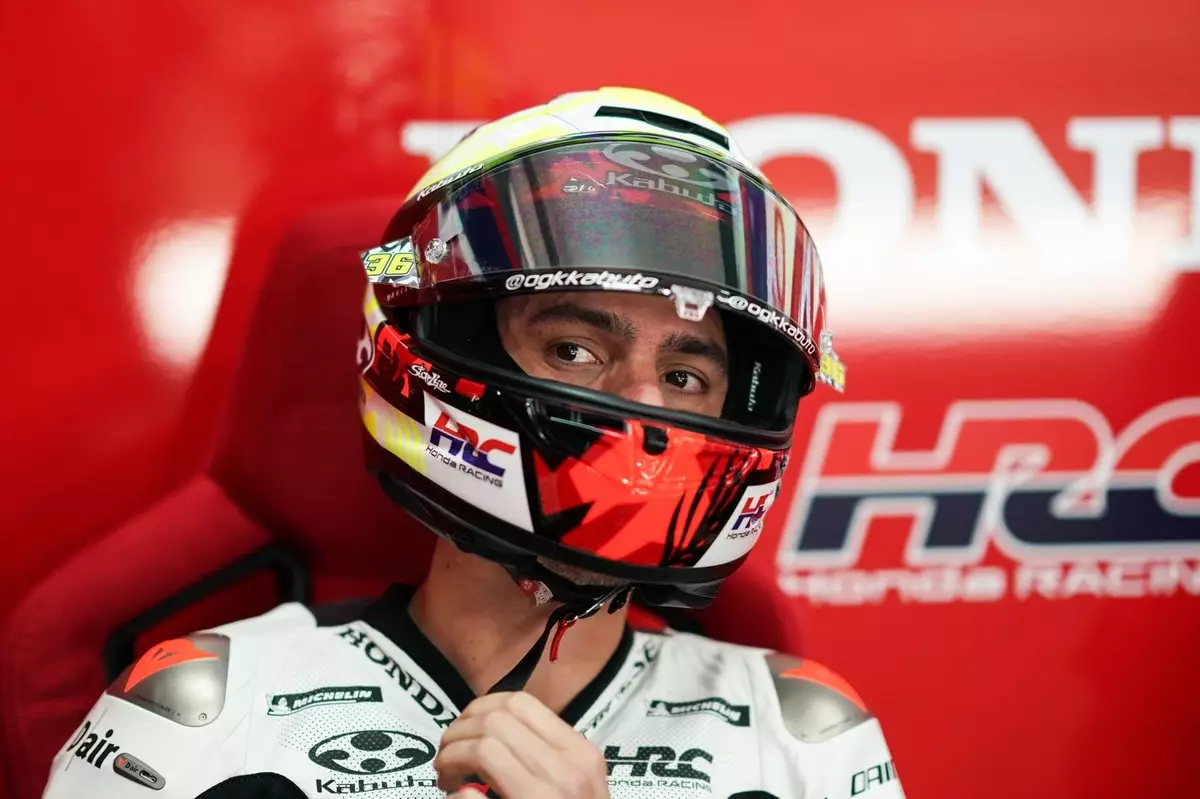Joan Mir’s journey in MotoGP has been marked by a remarkable rise to prominence, followed by a stark and challenging transition. His days with Suzuki set a high standard for success, culminating in a championship win in 2020, which left him accustomed to riding competitively at the front of the pack. Thus, joining Repsol Honda in 2023 presented a juxtaposition that few athletes can truly prepare for—a lack of competitiveness that seemed foreign to him. The allure of Honda, a manufacturer renowned for its past dominance, inspired optimism, yet reality quickly set in as Mir struggled to adapt to the underwhelming performance of the RC213V.
The stark contrast between Mir’s flourishing early career and his subsequent battles with the unyielding machine was both surprising and disheartening. It’s common in motorsports for a athlete’s identity to be intertwined with their performance; Mir’s identity suddenly felt threatened as the competitive edge diminished. Ending his debut season at Honda in a dismal 22nd position underscored the harsh reality of a sport that favors results above all. Being consistently outperformed by newer teammates and machinery dented not just his performance but his mental well-being too.
Honda’s reliance on Mir for development became crucial, especially after the departure of Marc Márquez, a rider synonymous with the marque’s success. Team principal Alberto Puig’s acknowledgment of Mir’s importance underscored a broader narrative: the need for rising stars to step up when established champions falter. The implications were profound—it was not merely about winning races anymore; it was about rediscovering a blueprint for success upon which Honda could rebuild.
Mir’s admission of a lack of motivation reflects the psychological toll of racing, particularly when an athlete transitions from a position of strength to one of struggle. The pressure to perform, compounded by the weight of expectation from both the team and fans, can easily lead to doubt and disillusion. Mir’s candid recognition of these feelings paints a portrait of an athlete grappling with the intersection of talent and circumstance, caught in an environment that serves as both a crucible and a challenge.
In motorsport, resilience is as critical as skill. The realization that Mir had to regain his motivation is a testament to the cyclical nature of sporting careers. His decision to sign a two-year extension with Honda indicates not just a commitment to the team, but a determination to conquer the obstacles in his path. This act of faith, both in himself and in the potential of the bike, marks a significant turning point; Mir recognizes that growth is often born from struggle.
Pre-season testing showed the first glimmers of hope for Mir as he managed to clock competitive times, illustrating a newfound belief in the Honda machinery. The satisfaction he expressed after finding a bike that suited his style showcased an important turning point—returning to the joy of racing that initially drove him to the sport. The eighth-fastest time at Buriram, especially amidst the context of a grueling two years, was not just a number; it was a symbol of resurgence.
Understanding the journey of Joan Mir reveals broader truths about the nature of competition, performance, and personal resilience. The stark transition from acclaim to adversity is a narrative common in the sporting world, but it is the response to challenges that often defines a competitor’s legacy. As Mir looks ahead, the ongoing development of the RC213V and his role in shaping its future could deem him pivotal not just for Honda, but for his revival as a formidable contender.
In the complex world of MotoGP, where success can be fleeting and disappointment all too familiar, Mir’s story serves as a reminder that perseverance and a willingness to adapt can ultimately lead to renewal. Only time will tell if he can reclaim his competitive edge, but there is no denying that Mir’s journey embodies a compelling saga of ambition, struggle, and hope.


Leave a Reply